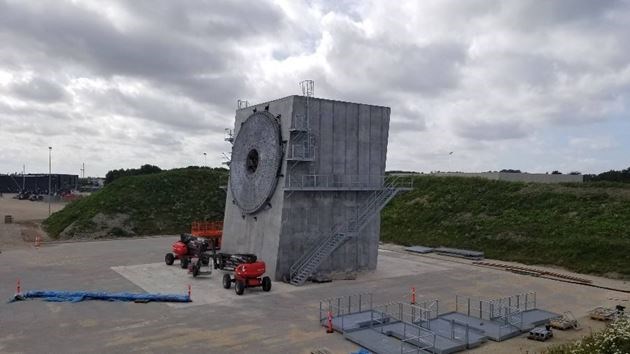Siemens Gamesa to build world's largest wind turbine test stand
The company’s site in Aalborg, Denmark will be capable of performing full-scale tests on the next generations of rotor blades.

Source | Siemens Gamesa Renewable Energy
Siemens Gamesa Renewable Energy (SGRE, Zamudio, Spain) has begun construction of the world’s largest wind turbine blade test stand in Aalborg, Denmark. The site will be capable of performing full-scale tests on the next generations of SGRE rotor blades and is expected to be fully operational before the end of 2019.
The company says the aim of the R&D investment is to significantly reduce the risk of technical issues and simultaneously deliver wind turbines that are innovative and reliable.
“The first tests will be on the 94 meter-long blades for the SG 10.0-193 DD offshore wind turbine, which are almost the same length as one soccer field. We are however building the test stand to accommodate the blade sizes that we will see in the future,” says Vicente García Muñoz, head of Validation Means Management at SGRE.
According to SGRE, the test stand structure will incorporate more steel rebar reinforcement per square meter than a wind turbine foundation and have the capability to accelerate the test and prove full reliability over the lifetime of the blade in the shortest possible time, while fully respecting International Electrotechnical Commission (IEC, Geneva, Switzerland) regulations.
Related Content
-
Composites end markets: Batteries and fuel cells (2024)
As the number of battery and fuel cell electric vehicles (EVs) grows, so do the opportunities for composites in battery enclosures and components for fuel cells.
-
Honda begins production of 2025 CR-V e:FCEV with Type 4 hydrogen tanks in U.S.
Model includes new technologies produced at Performance Manufacturing Center (PMC) in Marysville, Ohio, which is part of Honda hydrogen business strategy that includes Class 8 trucks.
-
Collins Aerospace to lead COCOLIH2T project
Project for thermoplastic composite liquid hydrogen tanks aims for two demonstrators and TRL 4 by 2025.















